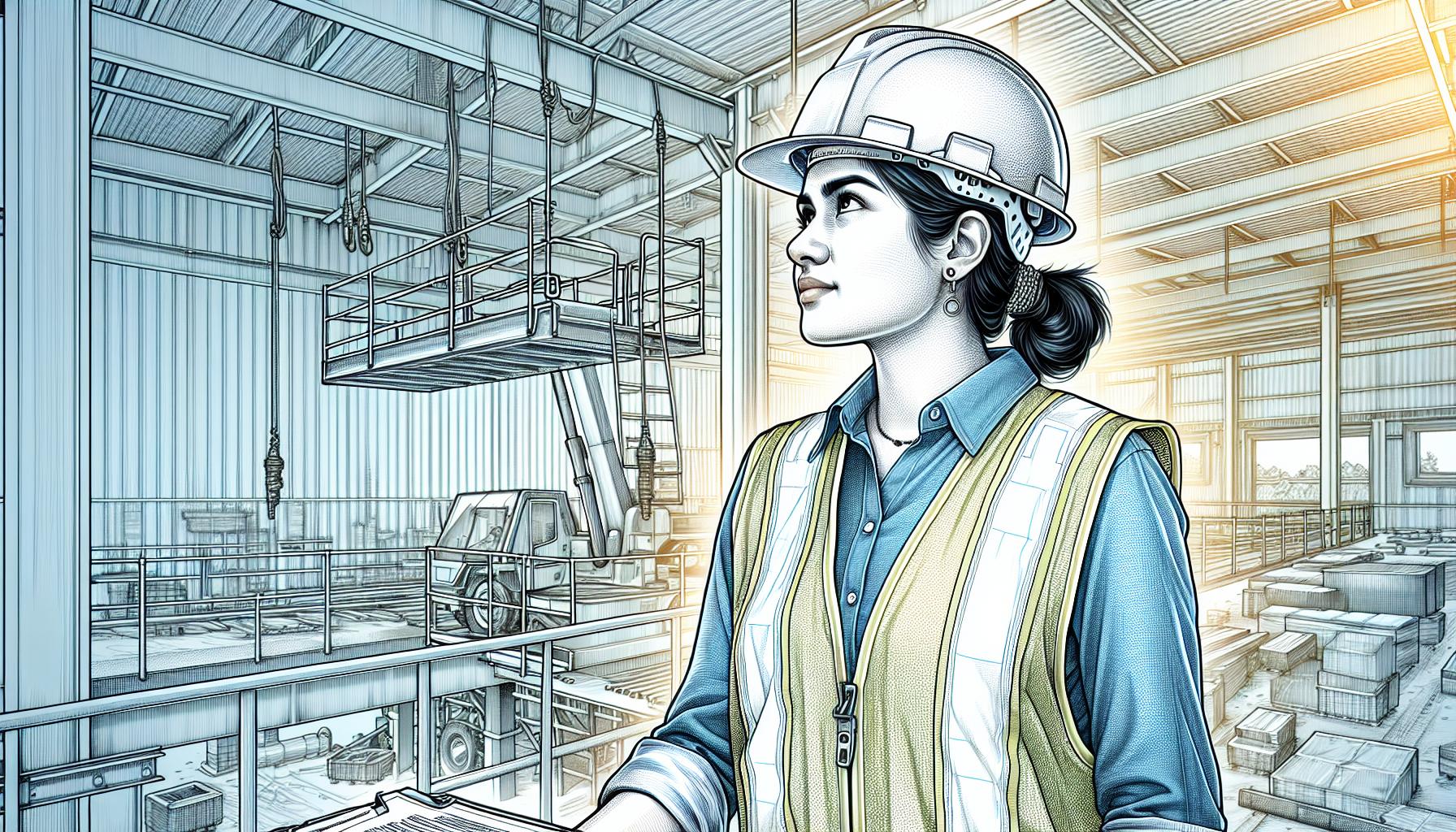Workplace safety isn’t just a priority—it’s a necessity. Every day, countless workers face potential hazards, from construction sites to factory floors, making public-safety regulations essential. These rules aren’t just about compliance; they’re about ensuring that every worker goes home safe and sound.
I’ve always found it fascinating how these regulations focus on protecting workers’ well-being while balancing industry demands. From preventing accidents to addressing long-term health risks, these measures are designed with employees at the core. But what exactly are these regulations, and how do they safeguard workers across different industries? Let’s dive into the specifics.
Understanding Public-Safety Regulations
Public-safety regulations play a vital role in maintaining worker safety. These rules prioritize employee well-being while balancing operational efficiency in various industries.
Importance Of Worker-Centric Policies
Worker-centric policies provide a structured framework to reduce workplace risks. These policies address hazards like physical injuries, chemical exposures, and ergonomic stress. The Occupational Safety and Health Administration (OSHA) sets standards such as machine safety guidelines and exposure limits to protect employees in industries like manufacturing and construction. For example, mandatory fall protection systems reduce fatalities among construction workers.
Employers adhere to these policies to minimize accidents and prevent compliance penalties. Policies also foster trust, boosting worker morale and productivity. By emphasizing employee protection, industries reduce long-term costs associated with workplace incidents.
Historical Evolution Of Worker Protections
Worker protections emerged during the Industrial Revolution in response to exploitative labor practices and hazardous conditions. Early regulations like the Factory Acts in 19th-century Britain set foundational limits on work hours and child labor. In the US, the establishment of OSHA in 1970 marked a significant step, introducing enforceable safety standards nationwide.
Over decades, amendments have adapted these protections to modern challenges. For instance, the 1991 Bloodborne Pathogens Standard was introduced to safeguard healthcare workers. This historical progression highlights a continual refinement to address evolving workplace environments and risks.
Key Public-Safety Regulations Focused On Worker Protection

Public-safety regulations prioritize workplace hazards and employee well-being, particularly in high-risk industries. Regulatory frameworks enforce critical protections through standards that mitigate risks.
Occupational Safety And Health Regulations (OSHA)
The Occupational Safety and Health Act of 1970 established OSHA to set and enforce safety standards nationwide. These regulations address workplace hazards like chemical exposure, machine guarding, and fall protection. For example, OSHA’s permissible exposure limits safeguard workers in manufacturing from harmful substances like lead or asbestos. Regular compliance inspections ensure adherence, targeting industries such as construction and warehousing, where risk levels are significant.
Fair Labor Standards Act (FLSA)
The FLSA promotes worker protection by regulating wages, overtime, and work hours. Enacted in 1938, it sets the federal minimum wage and limits child labor in hazardous employment. For instance, specific age restrictions apply to mining and manufacturing roles, reducing exploitation and risk for younger workers. Time-and-a-half overtime pay requirements incentivize protective scheduling practices across industries.
Workers’ Compensation Laws
Workers’ compensation laws provide benefits for employees injured on the job, ensuring medical care and wage replacement. These laws operate at the state level, covering specific injuries and illnesses incurred during employment. For instance, repetitive strain injuries like carpal tunnel syndrome are often included, depending on jurisdiction. Employers benefit from liability protections while workers receive guaranteed support, balancing equitable rights.
Industry-Specific Worker Protection Regulations

Different industries face unique hazards, requiring tailored regulations to safeguard employees. These industry-specific standards address risks intrinsic to their operational settings.
Construction And Manufacturing Standards
Construction and manufacturing industries implement regulations that mitigate risks like equipment accidents and exposure to hazardous materials. OSHA’s construction standards mandate fall protection, scaffolding safety, and proper machine guarding. For example, fall protection measures, such as harness systems, have significantly reduced fatalities in construction. In manufacturing, OSHA enforces lockout/tagout procedures to prevent machinery accidents during service or maintenance.
The National Fire Protection Association (NFPA) adds another layer by providing requirements for fire safety in industrial facilities. These standards ensure workers’ safety from fires and explosions caused by volatile chemicals or improper machinery upkeep.
Healthcare Worker Protections
Healthcare workers operate with elevated risks of exposure to infectious diseases and hazardous substances. The Bloodborne Pathogens Standard, introduced in 1991, protects healthcare employees from diseases like HIV and hepatitis through specific engineering controls and personal protective equipment (PPE). The Needlestick Safety and Prevention Act further complements this by reducing injuries from contaminated sharps.
To minimize chemical exposure, OSHA’s Hazard Communication Standard ensures employees are informed about hazardous drugs and substances used in healthcare settings. These safeguards protect workers while allowing them to provide essential patient care.
Agricultural Worker Safety Rules
Agricultural workers face heightened risks of machinery accidents, chemical exposure, and extreme environmental conditions. The Environmental Protection Agency (EPA) sets standards through the Worker Protection Standard (WPS) to reduce pesticide exposure among farmworkers. This regulation mandates proper training, protective equipment, and restricted re-entry intervals after pesticide application.
OSHA’s standards address agricultural machinery, requiring safety features like roll-over protective structures (ROPS) to prevent tractor-related injuries. Heat illness prevention efforts, particularly in hot climates, also ensure reduced risks tied to extreme heat exposure.
Challenges In Implementing Worker-Centric Safety Regulations

Implementing safety regulations that center on worker protection often faces significant logistical and industry-specific challenges. These hurdles can create gaps in enforcement and limit the ability to address new and evolving workplace risks comprehensively.
Gaps In Enforcement
Inconsistent enforcement of safety regulations creates significant vulnerabilities. Limited resources for inspection agencies, such as OSHA, result in fewer workplace audits; only 1% of workplaces are inspected annually, according to the AFL-CIO. Additionally, gaps arise from varying enforcement standards across federal and state levels, with some states lacking stringent protections. Industries with complex supply chains, like construction and agriculture, often experience fragmented accountability, complicating regulatory compliance. For instance, subcontractors might bypass safety measures to cut costs.
Evolving Workplace Hazards
Rapid technological advances and changing work environments introduce new safety risks. Automation and robotics in manufacturing reduce physical labor demands but pose risks like malfunctions and mechanical accidents. Gig economy platforms create non-traditional work scenarios where regulations lag behind, leaving gig workers without comprehensive protections. Emerging health risks, such as prolonged exposure to artificial lighting and sit-stand desks in modern offices, highlight the need for ergonomic policy updates. Environmental factors, including extreme heat and air quality issues, increasingly impact outdoor workers due to climate change, further complicating compliance with existing standards.
The Impact Of Worker Safety Regulations

Worker safety regulations focus on creating safer workplaces, directly reducing risks and improving employee health. These regulations ensure industries address hazards comprehensively, prioritizing worker protection.
Reducing Workplace Accidents
Worker safety regulations have significantly decreased the rate of workplace accidents. OSHA data demonstrates a 63% reduction in workplace fatalities since 1970, correlating with enforced standards. For example, fall protection requirements in construction have prevented an estimated 30% of injuries related to falls annually. Hazardous material handling protocols, such as those outlined in the Hazard Communication Standard, mitigate chemical exposure risks by ensuring proper labeling and training. In manufacturing, lockout/tagout procedures protect workers from machinery-related injuries during maintenance.
By addressing specific risks, tailored policies lower the likelihood of accidents in high-risk environments. Construction workers benefit from scaffold safety measures, while electrical safety rules safeguard line workers during maintenance. These combined efforts create measurable improvements in workplace safety.
Promoting Long-Term Employee Well-Being
Regulations also contribute to employees’ long-term physical and mental health. For example, the Bloodborne Pathogens Standard reduces healthcare workers’ exposure to infectious diseases, lowering chronic health risks. Ergonomic standards protect office workers from musculoskeletal disorders by promoting proper workstation design and posture training. Noise exposure limits in industries like manufacturing prevent hearing loss, a common occupational hazard.
Worker protections extend beyond physical health, fostering mental well-being by creating safer, more supportive environments. Stress reduction measures, including limits on excessive hours under the Fair Labor Standards Act, minimize burnout. Heat illness prevention guidelines mandated by OSHA safeguard outdoor workers, reducing heat-related stress and ensuring sustainable employment conditions. These regulations, combined, improve workers’ overall quality of life.
Conclusion
Worker protection remains a cornerstone of public-safety regulations, ensuring that employees across industries are safeguarded from a wide range of hazards. These regulations not only reduce workplace risks but also foster environments where health and safety are prioritized. By addressing industry-specific challenges and adapting to emerging risks, these policies continue to evolve, reflecting the growing complexity of modern workplaces.
The progress achieved through initiatives like OSHA standards and industry-specific protections underscores their critical role in saving lives and improving working conditions. As workplaces and technologies advance, maintaining a strong commitment to worker-centric safety measures is essential for sustaining these positive outcomes.
Frequently Asked Questions
Why is workplace safety considered a necessity?
Workplace safety ensures employee well-being, minimizes risks, and improves productivity. It’s essential for reducing accidents, injuries, and fatalities, while also complying with legal requirements.
What are the key workplace hazards mentioned in the article?
The article highlights hazards like physical injuries, chemical exposures, ergonomic stress, equipment accidents, and infectious disease risks, particularly in industries like construction, manufacturing, and healthcare.
What role does OSHA play in workplace safety?
OSHA (Occupational Safety and Health Administration) sets and enforces standards to mitigate workplace hazards. It ensures compliance with safety rules, such as fall protection and chemical exposure limits.
How do public-safety regulations benefit workers?
These regulations prioritize safety, reduce workplace risks, and ensure workers’ health through enforceable standards, such as mandatory protective equipment and safety protocols.
What industries face the highest safety risks?
Industries like construction, manufacturing, healthcare, and agriculture face the highest risks due to exposure to hazardous materials, dangerous equipment, and other work-specific hazards.
What historical event marked a turning point for workplace safety?
The establishment of OSHA in 1970 marked a significant milestone, revolutionizing workplace safety with enforceable nationwide standards.
How do regulations address child labor and work hours?
The Fair Labor Standards Act (FLSA) regulates work hours, overtime pay, and prohibits child labor in hazardous jobs, ensuring fair labor practices.
What are some industry-specific safety measures highlighted in the article?
The article discusses fall protection in construction, hazardous material handling in manufacturing, the Bloodborne Pathogens Standard for healthcare, and chemical exposure prevention in agriculture.
What challenges affect the implementation of workplace safety regulations?
Challenges include inconsistent enforcement, limited inspection resources, fragmented accountability, and adapting to emerging risks like automation and gig economy work.
How have worker safety regulations impacted workplace fatalities?
According to OSHA, workplace fatalities have decreased by 63% since 1970, with regulations like fall protection preventing 30% of fall-related injuries annually.
How do safety regulations account for new workplace risks?
Regulations are regularly updated to address evolving risks, such as automation-related accidents, ergonomic issues, and environmental hazards like extreme heat and poor air quality.
What is the role of workers’ compensation laws?
Workers’ compensation laws provide injured employees with benefits like medical care and wage replacement, balancing worker protection with employer accountability.
